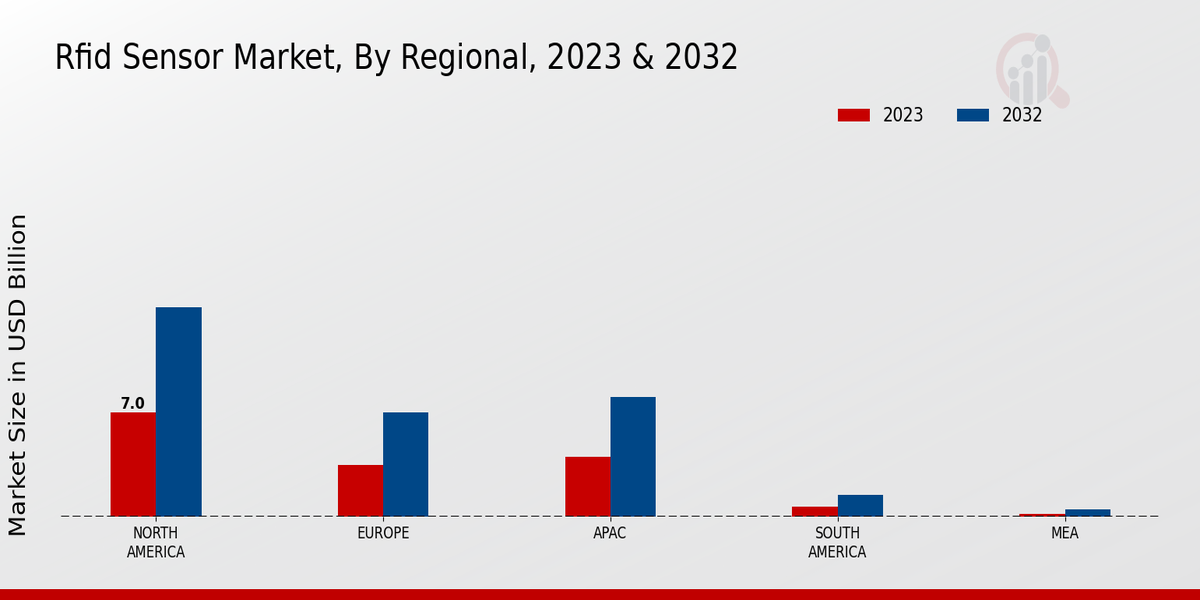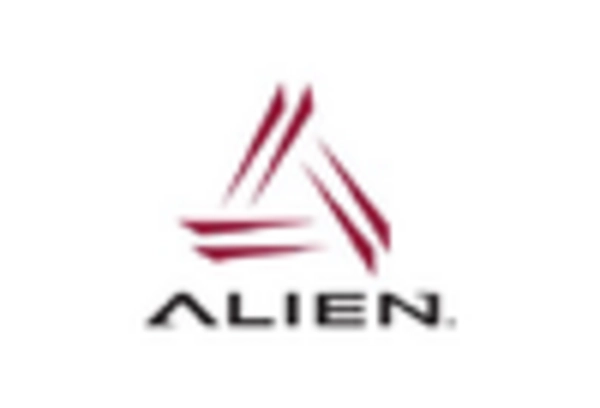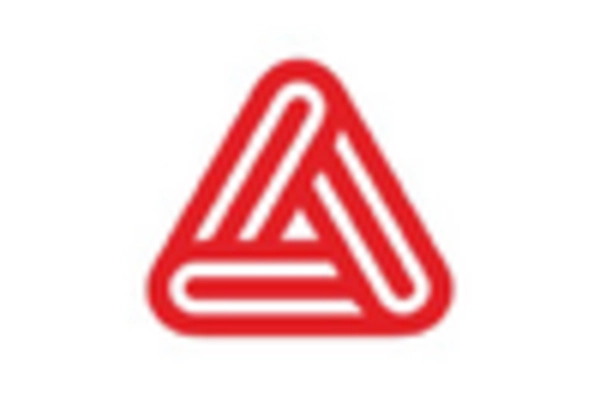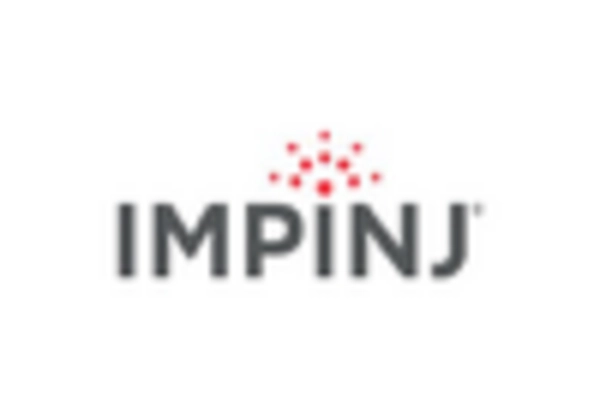Enhanced Inventory Management
The RFID Sensor Market is experiencing a surge in demand due to the need for enhanced inventory management solutions. Companies are increasingly adopting RFID technology to streamline their inventory processes, reduce errors, and improve accuracy. In 2025, the market for RFID sensors in inventory management is projected to reach approximately 3 billion USD, reflecting a compound annual growth rate of around 15%. This growth is driven by the need for real-time tracking and visibility of assets, which RFID sensors provide. As businesses seek to optimize their supply chains, the integration of RFID technology becomes essential, allowing for better decision-making and resource allocation. The RFID Sensor Market is thus positioned to play a pivotal role in transforming traditional inventory practices into more efficient, data-driven operations.
Rising Demand in Retail Sector
The retail sector is increasingly recognizing the advantages of RFID technology, propelling the RFID Sensor Market forward. Retailers are leveraging RFID sensors to enhance customer experience, manage stock levels, and reduce shrinkage. In 2025, the RFID sensor market in retail is expected to account for nearly 25% of the total market share, driven by the need for improved inventory accuracy and customer satisfaction. The ability to track products in real-time allows retailers to respond swiftly to consumer demands, thereby optimizing sales strategies. Furthermore, the integration of RFID technology in point-of-sale systems is likely to enhance operational efficiency. As the retail landscape evolves, the RFID Sensor Market is set to become a cornerstone of modern retail operations, facilitating seamless transactions and inventory management.
Growing Focus on Asset Tracking
The growing focus on asset tracking is a key driver for the RFID Sensor Market. Organizations across various sectors are increasingly adopting RFID technology to monitor and manage their assets effectively. In 2025, the asset tracking segment is anticipated to represent a significant portion of the RFID sensor market, with an estimated value of over 2 billion USD. This trend is largely attributed to the need for enhanced visibility and accountability in asset management. RFID sensors facilitate real-time tracking, enabling organizations to minimize losses and optimize asset utilization. As industries recognize the value of precise asset tracking, the RFID Sensor Market is likely to witness substantial growth, driven by the demand for solutions that enhance operational efficiency and reduce costs.
Technological Advancements in RFID Systems
Technological advancements are significantly influencing the RFID Sensor Market, leading to the development of more sophisticated and efficient RFID systems. Innovations such as the integration of Internet of Things (IoT) capabilities with RFID technology are enhancing data collection and analysis. In 2025, the market for advanced RFID sensors is projected to grow by approximately 20%, as businesses seek to leverage these technologies for better operational insights. Enhanced features such as increased read ranges, improved battery life, and miniaturization of sensors are making RFID solutions more appealing across various sectors. These advancements not only improve the functionality of RFID systems but also expand their applicability, thereby driving growth in the RFID Sensor Market. As companies continue to invest in cutting-edge technologies, the potential for RFID systems to revolutionize operations appears promising.
Increased Regulatory Compliance Requirements
Increased regulatory compliance requirements are shaping the RFID Sensor Market, particularly in sectors such as healthcare and food safety. Organizations are compelled to adopt RFID technology to meet stringent regulations regarding traceability and accountability. In 2025, the market for RFID sensors driven by compliance needs is expected to grow significantly, as companies seek to ensure adherence to industry standards. The ability to track products throughout the supply chain is becoming essential for compliance, particularly in industries where safety is paramount. RFID sensors provide a reliable means of documenting the movement and handling of products, thereby facilitating compliance with regulatory mandates. As the landscape of regulations continues to evolve, the RFID Sensor Market is poised to expand, driven by the necessity for businesses to implement effective tracking solutions.
















Leave a Comment